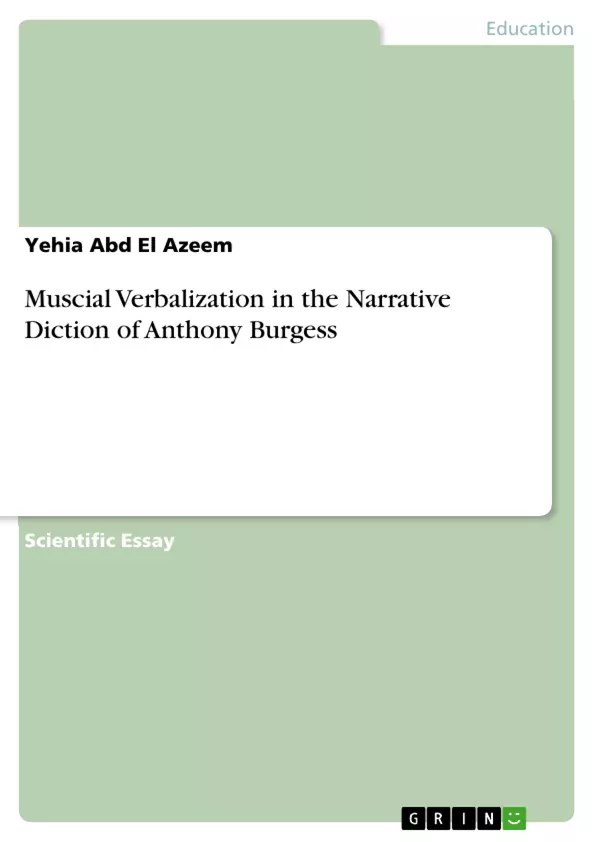This essay demonstrates that instrumentation may be not suggestive. Be it an incidental music, or a formal text, the very nature of authorship may permit a Pyrrhic 'pun', by means of which its analogical 'devices' -in general- may work against their 'own' means of duality.As a preliminary approach to such self-destructive duality in specific, we are being proposed to 'devices' being repressed a midst two denominations namely;the transcendental realm of the octa-tonic scale and the narrative diction of Anthony Burgess. These devices include but not restricted to ;'the evasive cadence', 'petro-musicology','elevator music', 'the chromatic scale' and 'the diatonic cycle'. It gratifies the schematic approach of Anthony Burgess towards his understanding of music, but exclusively traces the wayward musicality of misunderstanding.
Inhaltsverzeichnis (Table of Contents)
- Musical Verbalization in the narrative diction of Anthony Burgess
- Burgess and Music
- The Musical Verbalization of Instruments and Voices
- The Wanting Seed
- Billy Budd
- The Musical Verbalization of Musical Terms and Techniques
- The Worm and the Ring
- The Complete Enderby
Zielsetzung und Themenschwerpunkte (Objectives and Key Themes)
This text aims to analyze the musical verbalization in the narrative diction of Anthony Burgess, a prolific novelist, literary critic, and accomplished musician. The author was particularly adept at incorporating musical elements into his writings, creating a unique literary style.
- The influence of musicality on Burgess's writing style
- The use of instruments and voices as figurative devices in his works
- The application of musical terms and techniques to enhance narrative structure and character development
- Burgess's engagement with the musical works of other modernists, particularly James Joyce
- The concept of musicality as a form of self-expression and artistic autonomy
Zusammenfassung der Kapitel (Chapter Summaries)
The text explores Burgess's unique approach to writing, which involves a profound integration of musical concepts and elements. The author utilizes instruments, voices, musical terms, and techniques to enrich his narratives, providing a deeper layer of meaning and complexity.
- The chapter "Musical Verbalization in the narrative diction of Anthony Burgess" introduces the concept of musical verbalization and contextualizes Burgess's unique approach within the broader literary landscape. It highlights the author's musical background and his penchant for incorporating musical elements into his prose.
- The chapter "Burgess and Music" examines the author's relationship with music and its influence on his literary output. It explores the ways in which his musical sensibilities shaped his writing style and his engagement with other writers who incorporated music into their works.
- The chapter "The Musical Verbalization of Instruments and Voices" delves into specific examples of musical verbalization in Burgess's novels. It analyzes the ways in which he uses instruments and voices as figurative devices to convey mood, character traits, and thematic significance.
- The chapter "The Musical Verbalization of Musical Terms and Techniques" focuses on Burgess's utilization of musical terms and techniques within his writings. It highlights the author's knowledge of music theory and his skillful application of musical concepts to enhance his narratives.
Schlüsselwörter (Keywords)
The key concepts and terms explored in this text include musical verbalization, Anthony Burgess, literary style, narrative diction, instruments, voices, musical terms, musical techniques, modernism, James Joyce, Ulysses, and the influence of music on literature.
- Citar trabajo
- Yehia Abd El Azeem (Autor), 2013, Muscial Verbalization in the Narrative Diction of Anthony Burgess, Múnich, GRIN Verlag, https://www.grin.com/document/280274



